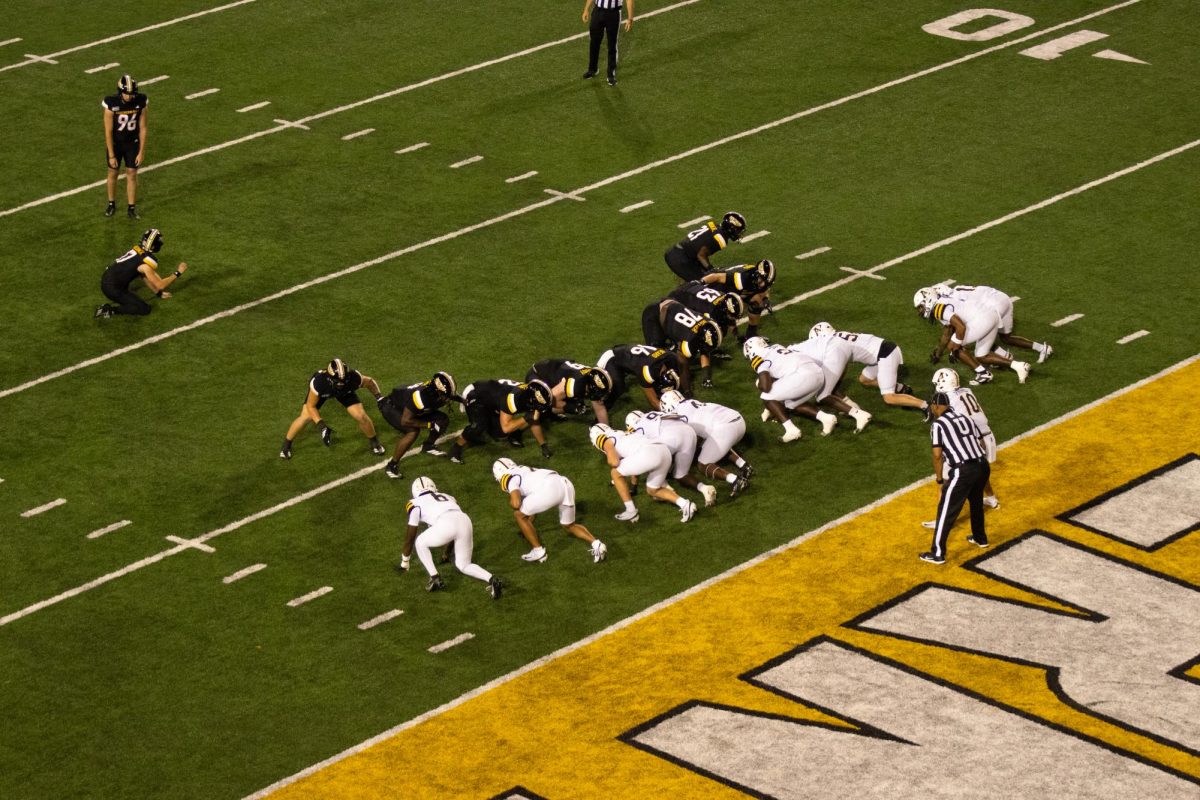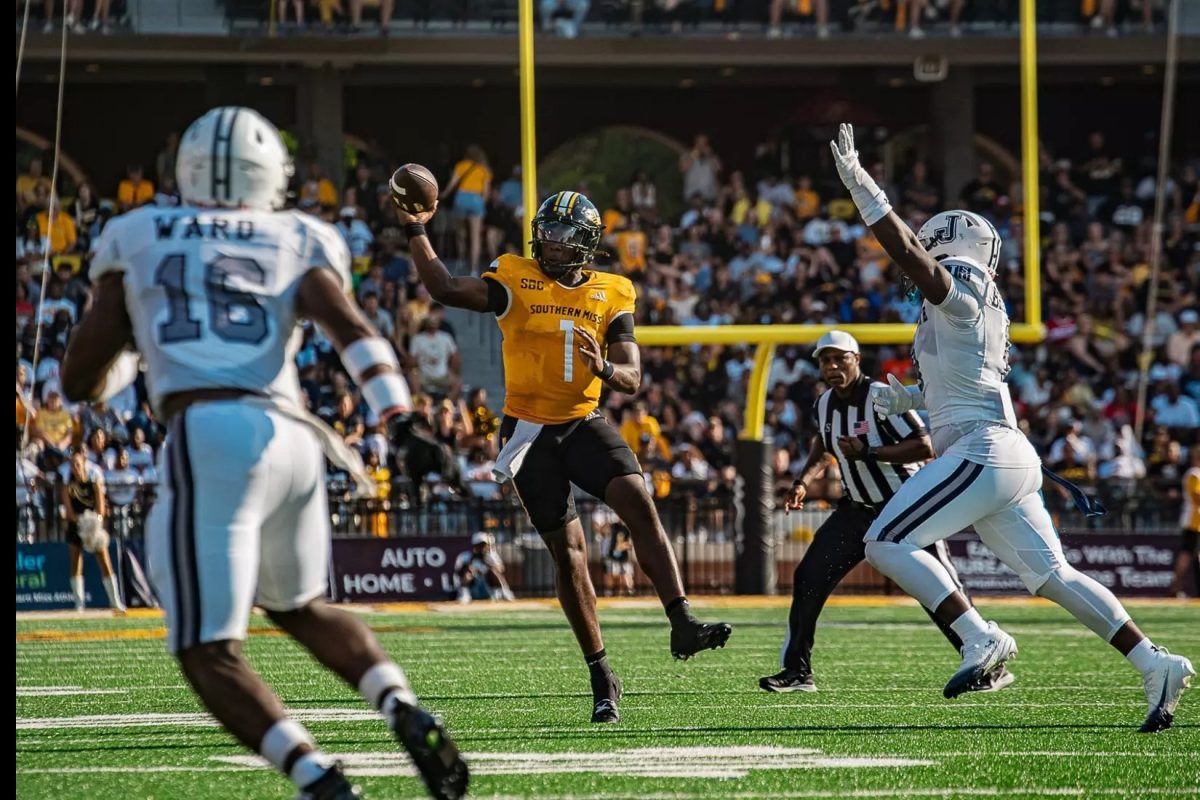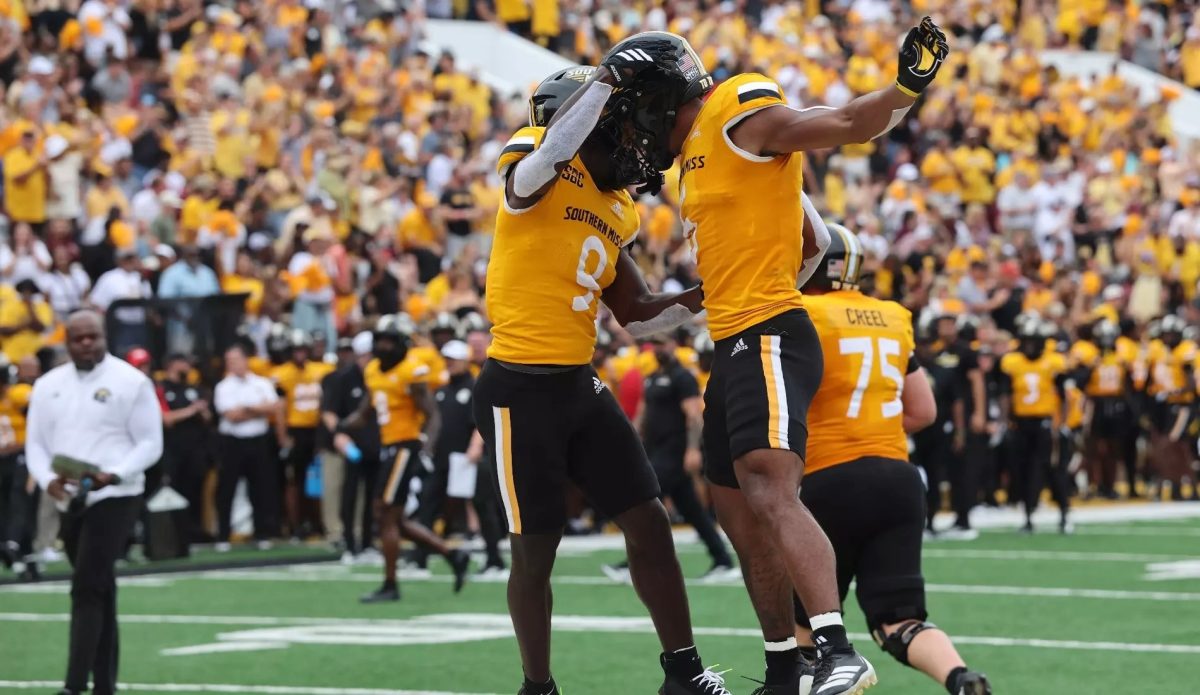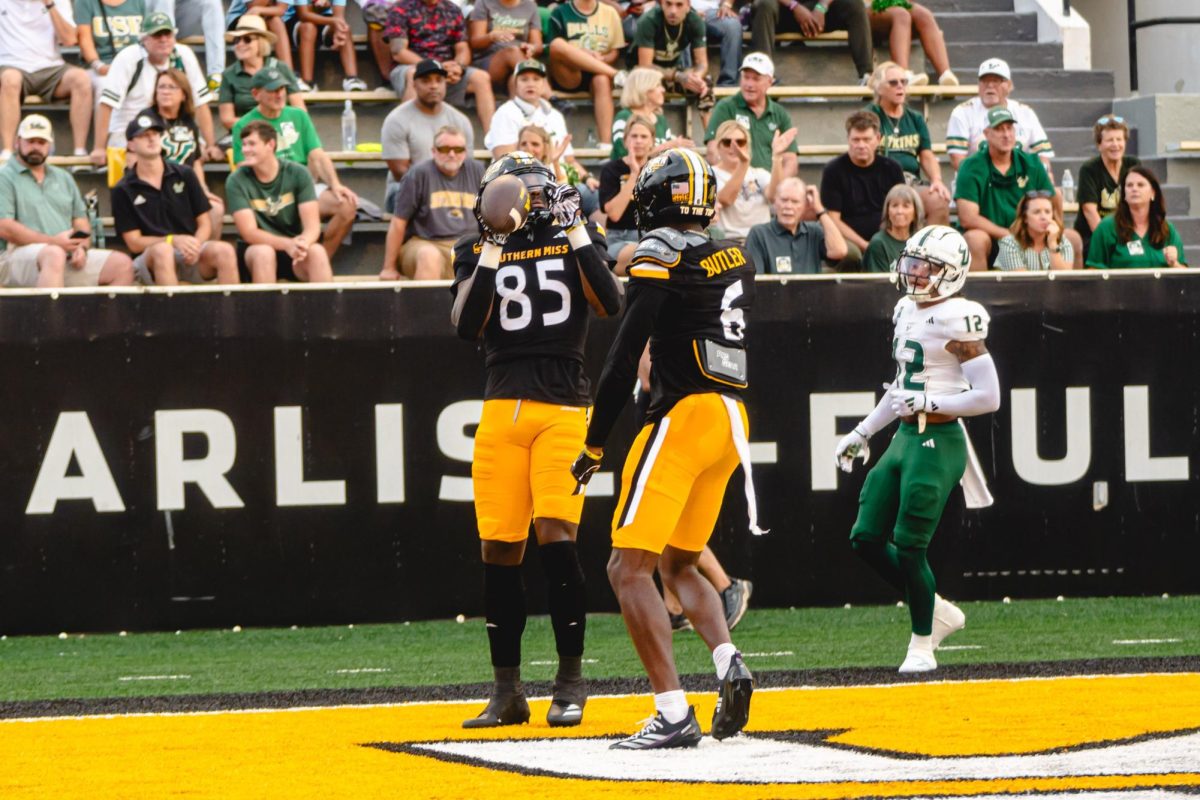In 30 minutes of football, Green Bay Packers quarterback Aaron Rodgers passed for 335 yards and five touchdowns. The 29-year-old quarterback’s half-game performance easily surpassed the 2003 NFL average of 200.4 yards passing per game.
What is behind the new aerial attack of the NFL? We are witnessing a change in the NFL that can be accredited to many different reasons.
Andrew Luck, Robert Griffin III and Russell Wilson were taken in the 2012 NFL Draft and shared a unique ability to extend plays to throw first and run second. The three combined for 32 wins in the 2012 season, an unprecedented achievement for a trio of rookies.
A hypothesis of this new trend is the recent change of the college game. More schools have moved from a read-option offense to a spread. Instead of quarterbacks reading defensive ends on handoffs they are reading cornerbacks and linebackers and getting the ball out quicker.
This system is prevalent around college football and is run USM head coach Todd Monken. Today, the name of the game is scoring points in bunches. The quarterbacks that are coming into the league every year are the guys who are running this system in college and already possess the mindset on how to attack a defense.
Aaron Rodgers, Michael Vick and Colin Kaepernick share a similar dual-threat technique to the 2012 rookies. The veteran trio averages 330 yards in the air while also averaging 33 on the ground so far during the 2013 season.
But how do we explain the elite pocket-passing quarterbacks of Tom Brady, Drew Brees and Peyton Manning? After all, Brady broke the all-time single-season passing touchdowns record in 2007, Brees shattered the all-time single-season yards passing record in 2011 and Manning threw for seven touchdowns in this year’s season opener.
The offensive schemes in football have changed. Instead of traditional under-center formations, new schemes that utilize spread attacks give the quarterback more opportunities. This scheme allows quarterbacks to have a wider view of the defense and give him distance from defensive ends before the center even snaps the ball.
Even Alabama has made a scheme change to utilize the pistol and spread attack. While they still ground and pound with the best of them, they are doing so from various formations that cause matchup problems all over the field.
The schemes no longer have blocking fullbacks or tight ends but rather athletic receiving tight ends like Rob Gronkowski or agile, fast running backs like Reggie Bush. These elite dual-threat weapons are faster than bulky linebackers that also have to worry about stopping a running game.
Receivers are getting bigger, faster and stronger every year. Calvin Johnson broke the all-time single-season receiving yards record in 2012. At 6 feet 5 inches, 236 pounds, the elite receiver was able to torch the secondary and overpower defenders to gain yards after the catch. With an average height of 5 foot 11, cornerbacks are already at a disadvantage when they can’t jam receivers at the line of scrimmage.
The final reason behind the new passing league is defensive players are scared to hit receivers or quarterbacks which could draw a penalty, fine, ejection or suspension. Defensive players have to time hits perfectly, something that is very difficult to do with how high-paced the game is today.
Offensive coordinators understand the rule changes and constantly call for their elite tight ends and slot receivers to run routes in the middle of the field. A concussive hit ten years ago would now be a deflected tackle and extra yards after the catch. Coordinators utilize these rules and dial up 40-55 passing attempts a game.
The game revolves around the quarterback and those who protect him or hunt him down. As more rules change in favor of the offense, you should expect those old records to be broken soon.






























